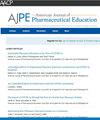药学博士课程中领导力评估范式的转变。
IF 3.5
4区 教育学
Q1 EDUCATION, SCIENTIFIC DISCIPLINES
引用次数: 0
摘要
目标:领导带来方向、一致性和/或承诺。观察和评估领导力,在上下文中,随着时间的推移,是一个挑战。在这篇评论中,我们采取批判的立场。我们不再描述与领导力相关的测量工具,并认为有效的领导力评估过程包括:从成就方法转变,扩大教育成果,研究评估和项目评估的新技术。研究结果:药学教育通常从成就的角度进行评估,为所有学生设定理想的表现水平。但领导力学习不是线性发展的——它是动态的,需要在一生中反复应用复杂的技能。因此,需要转向以增长为重点的评估方法。高质量的自我评估可以帮助教师了解学生的状况,促进学生的成长。以增长为中心的评估也可能包括项目级别的任务协调,随时间推移收集与领导相关的工作产品(例如,累积的封面,拼凑的文本评估),以及来自多个评估者的反馈。进入实践的目标包括领导身份的开始和对持续领导力发展的承诺。此外,领导力教育的影响可以通过扩展的教育结果分类(包括关系和情感结果)更充分地体现出来。为了支持项目的改进,强有力的项目评估可以深入了解领导力学习是否发生、如何发生以及为什么发生。确定了七个领域来推动领导力学习评估向前发展。总结:改变领导力教育中的学生学习评估范式需要调查、辩论和行动,利用评估专家和领导力教育者的集体智慧和专业知识。本文章由计算机程序翻译,如有差异,请以英文原文为准。
Shifting the Leadership Assessment Paradigm in Doctor of Pharmacy Curricula
Objectives
Leadership brings about direction, alignment, and/or commitment. Observing and assessing leadership, in context, over time, is challenging. In this review, we take a critical stance. We move beyond describing leadership-related measurement tools and argue that an effective leadership assessment process involves shifting from an attainment approach, broadening educational outcomes, and examining new techniques for assessment and program evaluation.
Findings
Pharmacy education has typically approached assessment from an attainment perspective, setting a desired performance level for all students to achieve. But leadership learning does not progress linearly, it is dynamic and requires repeated application of complex skills over a lifetime. Therefore, a shift to a growth-focused assessment approach is needed. Quality self-assessments can help instructors understand a student’s status and fuel student growth. Growth-focused assessment may also include program-level coordination of assignments, collection of leadership-related work products over time (eg, cumulative coversheets, patchwork text assessment), and feedback from multiple assessors. Entry-to-practice goals include the beginnings of a leadership identity and a commitment to ongoing leadership development. In addition, the impact of leadership education can be more fully captured with an extended taxonomy of education outcomes, including relational and affective outcomes. To support program improvements, strong program evaluation can provide insight into whether, how, and why leadership learning occurs. Seven areas are identified to move leadership learning assessment forward.
Summary
Shifting the student learning assessment paradigm in leadership education will require inquiry, debate, and action using the collective wisdom and expertise of assessment professionals and leadership educators.
求助全文
通过发布文献求助,成功后即可免费获取论文全文。
去求助
来源期刊
CiteScore
4.30
自引率
15.20%
发文量
114
期刊介绍:
The Journal accepts unsolicited manuscripts that have not been published and are not under consideration for publication elsewhere. The Journal only considers material related to pharmaceutical education for publication. Authors must prepare manuscripts to conform to the Journal style (Author Instructions). All manuscripts are subject to peer review and approval by the editor prior to acceptance for publication. Reviewers are assigned by the editor with the advice of the editorial board as needed. Manuscripts are submitted and processed online (Submit a Manuscript) using Editorial Manager, an online manuscript tracking system that facilitates communication between the editorial office, editor, associate editors, reviewers, and authors.
After a manuscript is accepted, it is scheduled for publication in an upcoming issue of the Journal. All manuscripts are formatted and copyedited, and returned to the author for review and approval of the changes. Approximately 2 weeks prior to publication, the author receives an electronic proof of the article for final review and approval. Authors are not assessed page charges for publication.

 求助内容:
求助内容: 应助结果提醒方式:
应助结果提醒方式:


